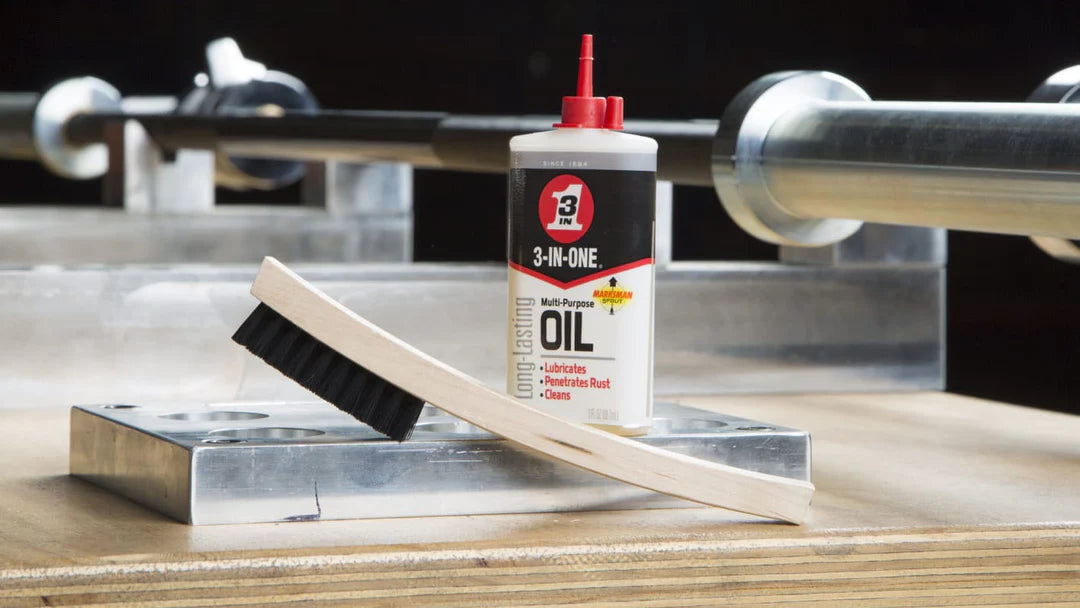Your training barbell is one of the most essential pieces of equipment in any strength training routine. Keeping it in peak condition not only enhances your workout performance but also extends the lifespan of the equipment. Whether you’re training at home or in a gym, following proper maintenance procedures can help you avoid rust, wear, and tear. This article will provide a detailed guide on how to maintain your barbell, focusing on Cleaning, Oiling, Maintenance, Rust Prevention, Proper Storage, and some recommended cleaning products.
1. Post-Training Cleaning
- After each training session, your barbell may accumulate sweat, chalk, and dust. If not cleaned promptly, these substances can accelerate oxidation and rust. Here’s how to clean your barbell after each workout:Wipe Down the Surface: Use a clean microfiber cloth (e.g., Microfiber Cleaning Cloths available at The Warehouse, Kmart, Briscoes) to thoroughly wipe down the barbell shaft and sleeves, removing sweat and dust. If there’s a buildup of grime, you can use Simple Green All-Purpose Cleaner, an environmentally friendly cleaner suitable for metal surfaces. It’s available at New World, Countdown, and various hardware stores.
-
Clean the Knurling: The knurling on your barbell can collect grime and sweat, affecting your grip. Use a stiff brush (like a toothbrush) to regularly clean the knurling, removing any dirt and chalk that has settled into the grooves, Wipe down with 3:1 oil and brush into the knurl with a plastic bristle brush. The steel will soak the oil in and the bar will stay healthy

2. Oiling for Maintenance
- The sleeves and bearings of your barbell require regular oiling to keep them rotating smoothly. Here’s how to properly oil your barbell:Oiling Frequency: Every few months, apply a small amount of CRC 5.56 Multi-Purpose Lubricant to the rotating parts. This lubricant is effective at preventing rust and keeping the sleeves moving smoothly. You can find it at Mitre 10, Bunnings Warehouse, and other hardware stores. For longer-lasting lubrication, you can also use WD-40 Specialist Protective White Lithium Grease.
- Key Considerations: Avoid using too much oil, as it can attract dust and cause premature wear of the parts.

3. Rust Prevention
Preventing rust is essential, especially if you’re storing your barbell in a humid environment. Regular rust prevention treatment is key.
- Use Rust Prevention Sprays: Every few months, apply a rust prevention spray like CRC 5.56 Multi-Purpose Lubricant or WD-40 Specialist Protective White Lithium Grease to the barbell shaft and sleeves. After spraying, wipe off any excess with a dry cloth to avoid residue.
- Keep It Dry: Always ensure that your barbell is dry after cleaning and in between uses, especially if you’re in a humid environment.
- Oxidation Rate: A barbell's resistance to oxidation depends on the type of steel and coating used. Barbells that are more prone to oxidation will need extra care and maintenance to maintain their appearance. The frequency of maintenance will vary depending on the climate and humidity of the location.
| Type of Barbell Coating | Oxidation Rate | Maintenance Period | Type |
| Bare Steel | High | After each use | Rogue Ohio Power Bar (Bare Steel) Texas Power Bar (Bare Steel) |
| Zinc (Bright/Black) | Medium | Every 1-2 weeks | Rogue Ohio Bar (Black Zinc) CAP OB-86B Beast Barbell (Black Zinc) |
| Cerakote | Low | Every 2-3 months | Rogue Cerakote Ohio Bar Rep Fitness Gladiator WL Barbell (Cerakote) American Barbell Cerakote Mammoth Bar |
| Hard Chrome | Low | Every 3-6 months | Eleiko IWF Weightlifting Training Bar Rogue Ohio Power Bar (Hard Chrome) Titan Fitness Atlas Bar (Hard Chrome) PowerDragon PowerBar Hansu IPF Approved Power Bar |
| Stainless Steel | Very Low | Minimal maintenance required | Rogue Ohio Bar (Stainless Steel) Hansu IPF Approved Stainless Steel Power Bar Vulcan Standard Stainless Steel Barbell PowerDragon Stainless Steel PowerBar |
| E-Coat | Low | Every 3-6 months | Rep Fitness Deep Knurl Power Bar EX (E-Coat) Rogue Ohio Bar (E-Coat) American Barbell E-Coat Training Bar |
4. Proper Storage
How you store your barbell when not in use can directly impact its lifespan and performance. Here are some storage tips:
- Store Horizontally: If possible, store your barbell horizontally on a barbell rack. This prevents the barbell from bending or warping over time.
- Avoid Ground Storage: If you must store your barbell on the ground, ensure the surface is dry and use rubber mats or other protective layers to reduce contact with moisture.
- Long-Term Storage: If you plan to store your barbell for an extended period, keep it in a dry, ventilated area away from direct sunlight and moisture.

By following these comprehensive maintenance steps and using the recommended cleaning products, you can ensure that your barbell remains in optimal condition for every workout. Whether it’s post-training cleaning or proper storage, these practices will significantly extend the lifespan of your barbell, saving you from unnecessary replacements.

